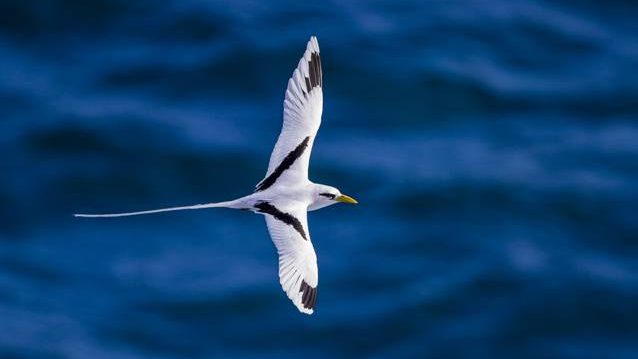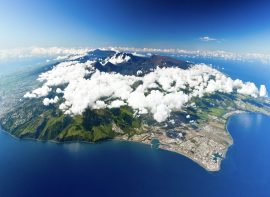

The presence of two major mountain ranges in the center of the island, combined with the effect of the trade winds, means that there are over 100 micro-climates in an area of just 2,500 km2. As a result, Réunion offers remarkable conditions for the settlement of flora and fauna.
It was first by air and water that the first elements of a particularly original flora were gradually introduced. Following the currents of the sea, cyclones and migrations, plants and animals colonized the island from neighboring regions of the Indian Ocean.
Many species unique in the world
In this way, almost 1,000 plant species, 30 bird species, 5 bat species, 6 reptile species – including a giant tortoise – and over 2,000 insect species have gradually become established. Isolated from the rest of the world and having to adapt to specific conditions, a very high proportion of these have evolved into endemic species, becoming unique in the world.
This natural wealth is quite considerable for a small island like Réunion! That’s why, along with Madagascar and the other islands of the south-west Indian Ocean, Réunion has been classified as one of the world’s 34 biodiversity “hotspots” by the World Conservation Union (IUCN).
Today, Réunion remains an exceptional protected area, with over 35% of its surface still covered by forests or primary plant formations.
Anthropogenic pressures and invasive species
If the arrival and settlement of man on the island has had a negative impact on the natural environment, it is now certain imported plant and animal species that have “escaped” from the fields or gardens and begun to invade the natural environments.
These invasive species threaten the balance of ecosystems and the most fragile native species, those threatened with extinction. Some of these “plagues” are now well known (Chestnut grape, Longose, Maurice’s blackbird, Galabert…). Others may soon become so (Pampas grass, Hydrangea…). And travellers continue to introduce new species every day…
Definitions
Primary forest, secondary forest
A forest or natural environment is said to be primary when it has never been modified by man. Their destruction is irreversible. Conversely, secondary forests or environments have been established, spontaneously or otherwise, after the influence of man. Their biodiversity is generally lower than that of primary forests.
Native, endemic, exotic… finding your way around
A species is said to be indigenous when it arrived on the island by natural means and was present before the arrival of man. Exotic species, on the other hand, have been introduced, whether voluntarily or not, by man. Among native species, some have gradually differentiated to create new species, known as endemics, which exist nowhere else in the world and are found in a limited territory (an island, an archipelago, a mountain range). There are 856 native plants on the island, including 232 endemic to Réunion and 156 endemic to the Mascarene Islands.



